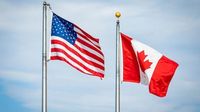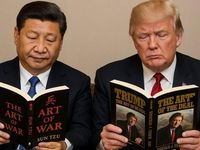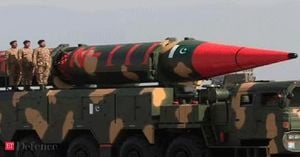As the world’s economic powerhouses wrestle with the consequences of escalating tariffs and trade disputes, the ripple effects are being felt from New Delhi to Ottawa. On the evening of September 15, 2025, a high-level U.S. trade delegation led by Assistant U.S. Trade Representative for South and Central Asia, Brendan Lynch, landed in New Delhi. The team’s visit, scheduled for just one day, marks the first in-person negotiations between India and the United States since their trade talks broke down earlier this year. The backdrop? A growing storm of tariffs, diplomatic frustration, and mounting economic strain on both sides.
According to The Indian Express, the talks come after the United States imposed an additional 25% tariff on Indian goods effective August 27, 2025, in response to New Delhi’s continued purchase of Russian oil. This was on top of a reciprocal 25% tariff set earlier in August. The move, which U.S. officials argue is part of a broader strategy to pressure nations buying Russian oil and thereby weaken Moscow’s war effort in Ukraine, has left Indian exporters reeling. American importers have started canceling orders, citing the steep tariffs, and the Indian government is scrambling to devise a relief package to address the liquidity crunch faced by businesses.
Rajesh Agarwal, India’s chief negotiator and Special Secretary in the Ministry of Commerce, told reporters, “India and the US have been engaged in talks at various levels, and the US trade team led by their chief negotiator is reaching India tonight, and we will be holding talks tomorrow to see what the future of talks will be.” But optimism is tempered by realism. As one Indian official put it, “It is not a round of negotiation. But we will try to see how we can reach an agreement with the US. We had been talking virtually but we have not made much progress because the environment was not conducive.”
Commerce Secretary Sunil Barthwal, however, struck a more hopeful note, stating, “There have been discussions going through diplomatic level, on level of trade, on level of chief negotiators, on level of ministers. And on the trade front, a team of US trade negotiators would be coming to India for discussions. Further courses of action will also be discussed. But overall, there is a positive frame of mind in both countries with respect to trade issues.”
Meanwhile, Indian exporters aren’t waiting for diplomatic breakthroughs. On September 11, 2025, they met with Reserve Bank of India Governor Sanjay Malhotra, seeking urgent support measures: a weaker rupee to boost export competitiveness, easier terms for loan repayment, and greater credit support to help them diversify into other markets. The stakes are high. As exporters warn, a prolonged delay in reaching a trade deal could mean a permanent loss of access to the lucrative U.S. market, as buyers turn to alternative suppliers.
Across the Atlantic, the tariff drama is playing out on another front. U.S. President Donald Trump, writing on Truth Social, described a major trade meeting in Europe between the U.S. and China as having gone “VERY WELL!” and hinted at a deal on a company beloved by young Americans. He added, “The relationship remains a very strong one!!!” But, as reported by Adam Button on September 15, 2025, expectations for a breakthrough in upcoming talks between Trump and Chinese President Xi Jinping remain minimal. The prospect of further action on tariff pauses is on the table, but only if talks yield positive results.
For India, the pressure is not just bilateral. The U.S. has urged G7 partners to ramp up sanctions pressure on buyers of Russian oil, explicitly naming China and India as top consumers. Yet, New Delhi is standing firm. Finance Minister Nirmala Sitharaman reiterated earlier this month that India’s oil purchases are driven by economic and commercial imperatives. With the country importing roughly 88% of its crude oil needs, alternatives are scarce. Prime Minister Narendra Modi, in his August 15 Independence Day speech, doubled down on his government’s priorities: “The well-being of Indian farmers, fisherfolk and cattle keepers is our foremost priority. Modi is standing like a wall against any adverse policy that could impact Indian farmers, fisherfolk and cattle keepers.” This was a clear signal to Washington that India would not compromise on its agricultural sector, especially in the face of U.S. demands to open Indian markets to American genetically modified products—a move fiercely resisted by Indian farmers.
But this isn’t just an India-U.S. story. The economic fallout from the Trump administration’s tariff policies is reverberating across North America. In an interview with the National Post, American economist Douglas Holtz-Eakin, president of the American Action Forum, laid out the sobering reality. “There’s probably some modest contribution of restrictive monetary policy by the Fed… But I think the truth is they would’ve cut had it not been for the tariffs. So all roads lead to the tariff decisions in the U.S.” He pointed out that U.S. economic growth slowed from 2.5% in the last quarter of 2024 to about 1-1.25% in the first half of 2025, attributing the deceleration squarely to tariff shocks. Canada, closely linked by trade, slipped into negative growth in the second quarter, with unemployment rising above 7%.
Holtz-Eakin doesn’t see Trump’s tariffs as mere negotiation tactics. “He firmly believes in tariffs, despite all logic to the contrary. The tariffs pose about a $400 billion tax increase on American businesses and consumers. That’s the impact it’s having on the economy,” he said. Worse, he believes the negative effects are just beginning. He forecasts near-zero or negative U.S. growth for the second half of 2025 and inflation rising from 3% to possibly 4.5%. Relief may come in 2026, thanks to tax benefits legislation and expected Federal Reserve rate cuts, but the immediate future looks bumpy.
The pain isn’t limited to manufacturing. “American farmers always bear the brunt of these trade wars. They were badly damaged during the China trade war back in (Trump’s) first term,” Holtz-Eakin noted. The supposed beneficiaries of tariff protections—farmers and manufacturers—are, ironically, among those suffering most, with higher input costs and shrinking export markets.
Politically, the fallout could be significant. Holtz-Eakin warned, “If the elections were held today, the Republicans in the House and Senate would be in real trouble.” With inflation biting into household budgets and unemployment edging up, the economic malaise is becoming a central issue ahead of the 2026 midterms.
Back in India, the government faces its own delicate balancing act. On one hand, it must protect its exporters and farmers from external shocks. On the other, it cannot afford to alienate a critical trading partner like the U.S. The way forward remains uncertain. Both sides insist they are “natural partners” and express optimism for a prosperous future, but the path to renewed trust and open trade is littered with obstacles—some of them self-inflicted.
As the world watches, the outcome of these negotiations will shape not only the fortunes of businesses and workers in India, the U.S., and Canada, but also the future of global trade itself. For now, uncertainty reigns, and the stakes could hardly be higher.





